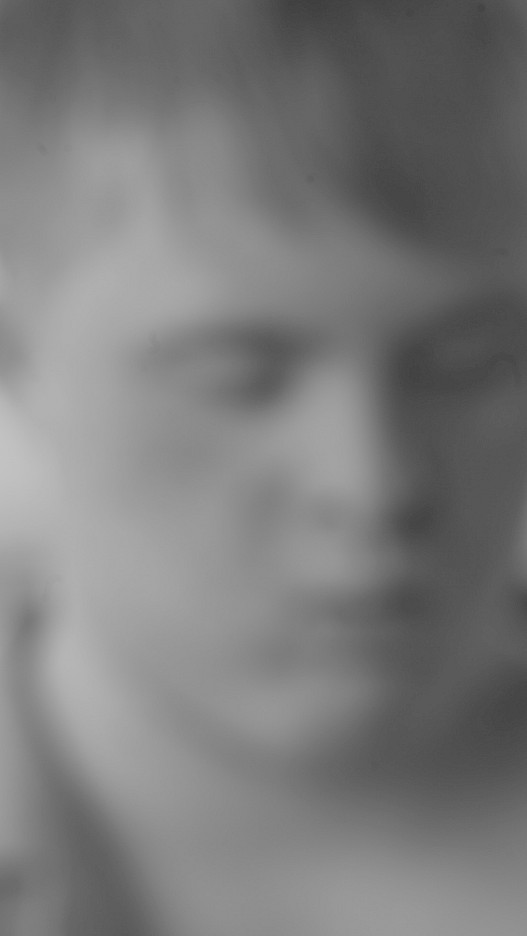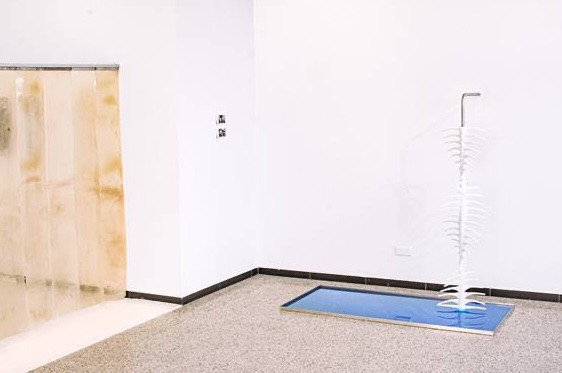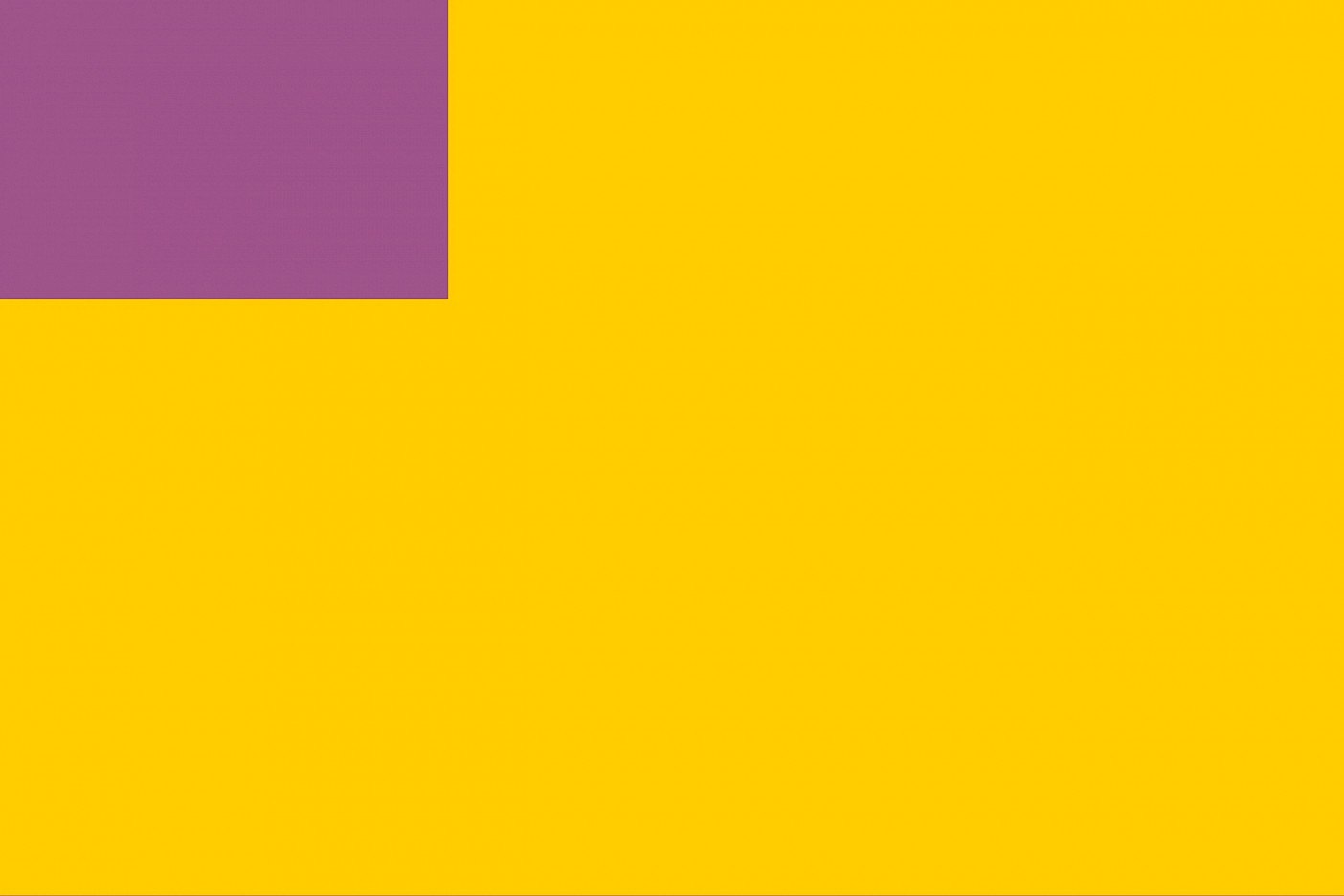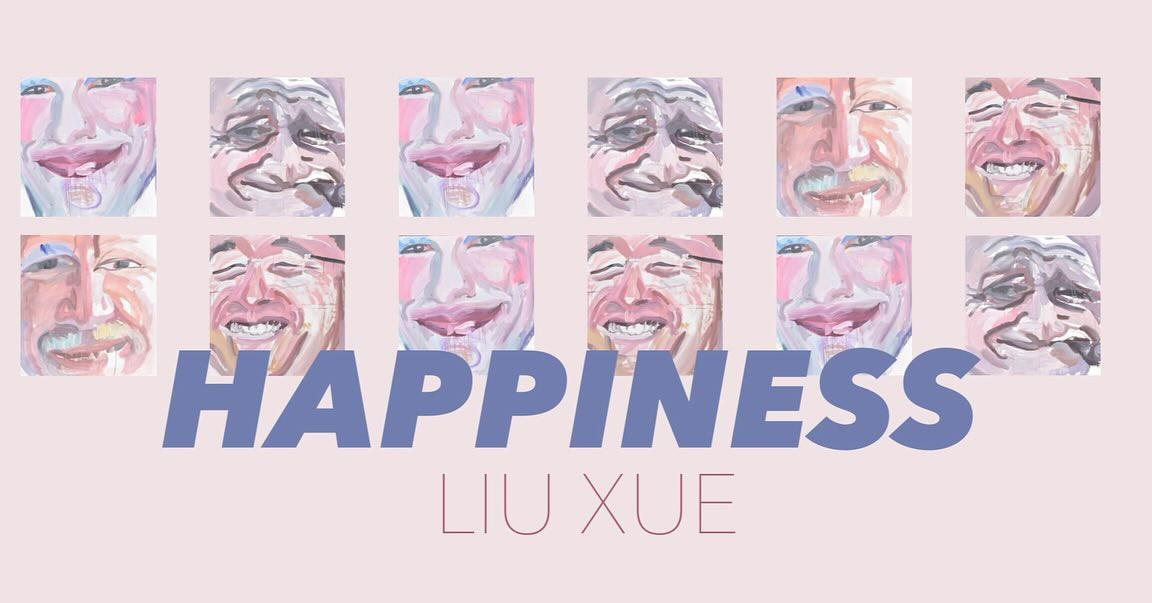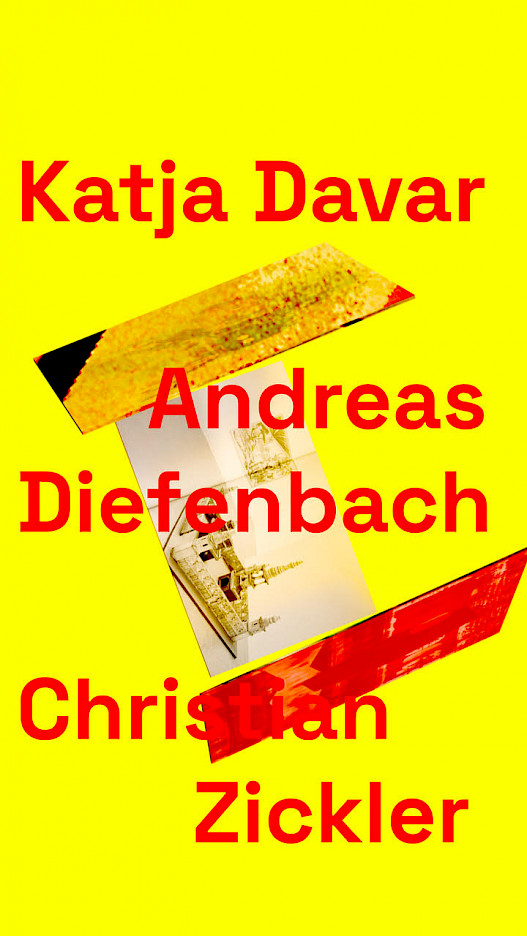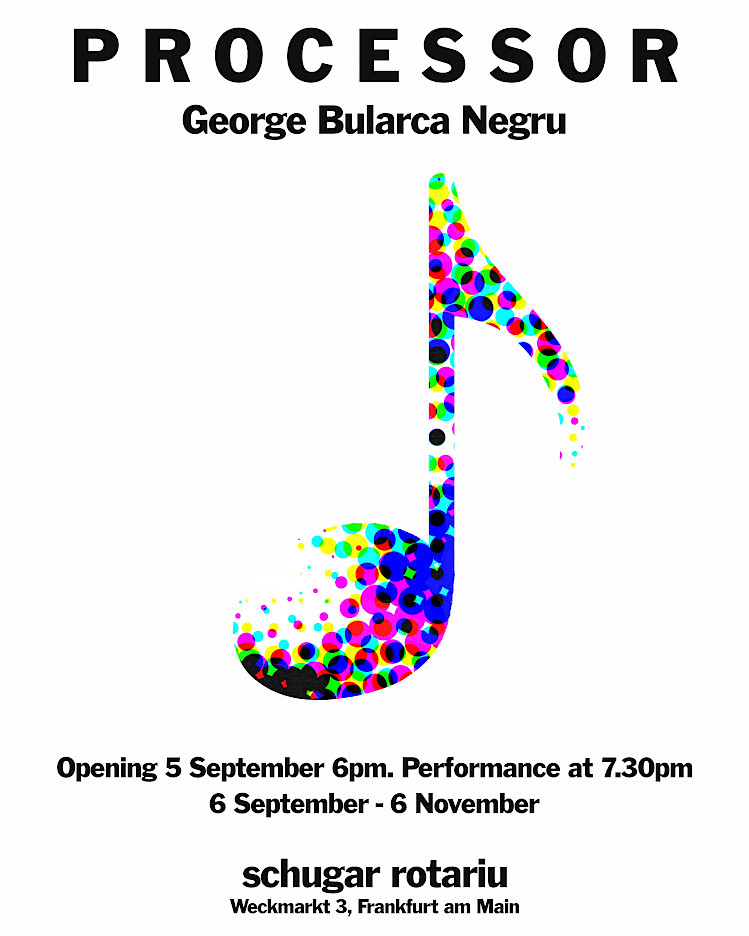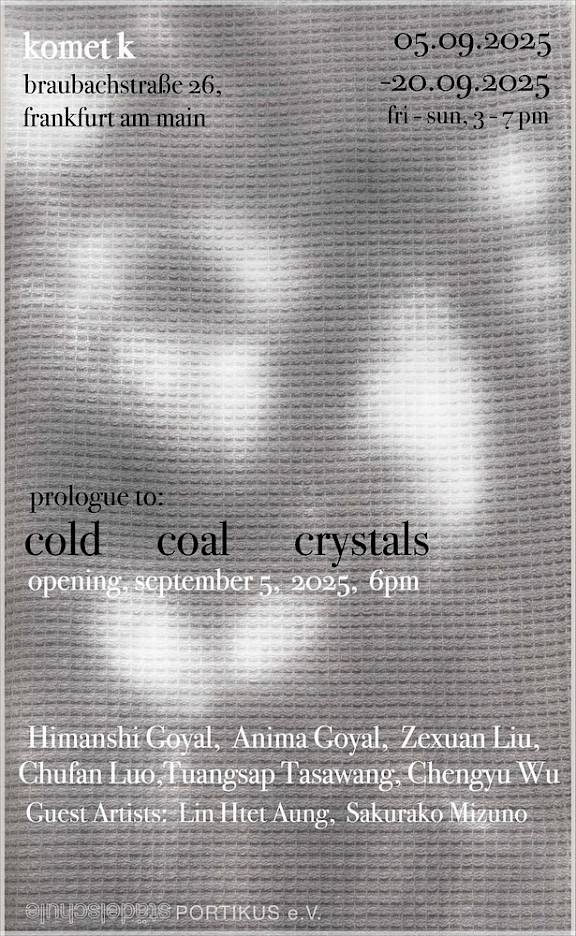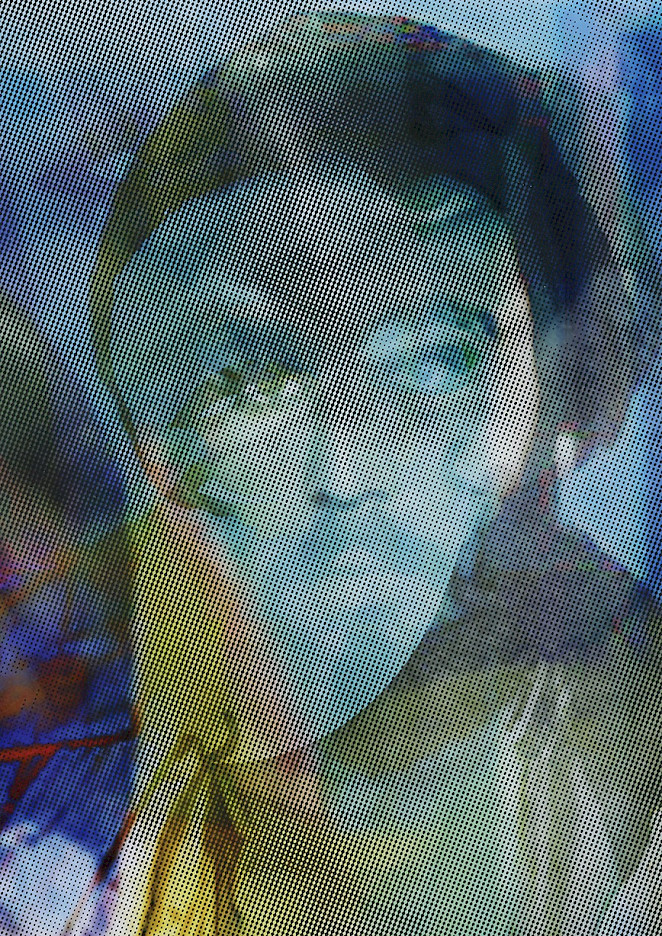Hell
Opening Friday, June 24, 2022, from 4 – 9 pm
25.6. – 3.9.22
Galerie Kai Erdmann
Schweidnitzer Str 17 · 10709 Berlin
Das eine ein fiebrig aufgeladenes Gemütslabyrinth, das andere die rätselhaft erhabenen Areale des Denkens und der Erinnerung - dem Bezirk des Unwirklichen, in dem Erinnerungsmomente aus früheren Lebensabschnitten künstlerisch archiviert sind.
Veit Loers
On the Light in Peyman Rahimi‘s HELL
It is not for nothing that Peyman Rahimi chose the word „Hell“ as the title of his current exhibition.
Ambiguous, certainly, but the English hellfire also has to do with light. It is far more likely, however, that Rahimi means the German adjective first - hell = bright - (and incidentally likes to take the Anglo-Saxon hell with it).
Peyman Rahimi‘s artistic works often have to do with light - naturally, one might object, what visual artist should that not be the case with?
So, to be more precise: the manifold use of - sometimes broken - mirrors, refractions of light, distortions and electric light is striking in Rahimi‘s oeuvre. They can be fluorescent tubes, conventional light bulbs or even very special, illuminants qua- si on the brink of extinction, which appear in this and that piece, but always represent very consciously placed components of the respective works.
The Berlin rooms of Gallery Kai Erdmann are bright in other respects as well, but in Rahimi‘s exhibition something strange happens. In addition to the lighting in the rooms - fluorescent tubes with relatively cold white light - Rahimi has installed some 500-watt strong so-called high-pressure sodium lamps. Even though similar lamps are still used in street lighting today, Rahimi‘s version is reminiscent of an old-fashioned, almost somewhat threatening lighting technology invention of the early 20th century.
Said lamps are very bright and very „green“. They bathe the exhibition in an absurd, cold, green light; they colour everything. You can‘t help but notice the strange lighting mood; it‘s somehow intrusive, strange, I seems strange even to myself, some visitors might feel uncomfortable.
But the point is, it doesn‘t let go of the feeling of not being able to „properly“ perceive the other works in the room, the pictu- res, fabrics, floors, the entire installation. I get the impression that I‘m getting it „wrong“. Something is wrong. What would it be like without this extreme light? And then it starts: what is light anyway? Wave theory, particle theory, light quantum theo- ry (so a kind of mix of the first two). And how do I perceive? Or what do I perceive under which given conditions and how? Why? Why in this way? I have no option to see things in space „differently“.
The light, and thus the artist, obviously determines how I perceive this space and everything in it. Here one could also inter- ject again: Of course, that‘s exactly what artists often try to do: interfere with the supposed realities, point out inconsisten- cies, make things fragile ... But I don‘t tend to feel that way in most of the exhibitions I visit.
Negotiating themes of perception in art can often be problematic. I remember seeing perfectly staged and executed works by other artists that function like perception traps, like „illusions“; they were always disappointing, reductive, sub-complex, a fairground joke.
In Rahimi‘s Hell, all this happens almost incidentally, unexcitingly, obtrusively and subtly at the same time.
Then I notice that the fluorescent tubes, the usual lighting in the Gallery Kai Erdmann, have a distinct pink glow. That is surely not the usual light here, but must be a result of the green light of the high-pressure sodium lamps; they apparently also colour the usual white room light: they colour my view of things. All the more I am unsettled. Whatever I see there, I cannot rely on it.
Can I ever rely on it, rely on it under „normal“ circumstances, can I trust daylight? Suddenly I have to think of bees, which supposedly can see UV light, but not shades of red.
And then there are multiple segmented mirror surfaces. Among many other works, of course: works on paper, fabrics that look like iron in their basic colourfulness and brutality covered with traces of rusty red (of course, one can only speculate about the colourfulness in daylight), fragmented floors made of dark tar paperboard...
But back to the mirror fragments, one of many works in this room that is obviously part of a larger whole. It is part of this room installation that we can perceive as a unit (partly because of the prevailing light).
The mirror work presented here has an untitled predecessor: a large mirror was mounted by Rahimi on canvas and bro- ken many times, the individual parts sticking to the fabric instead of lying shattered on the floor. Thus, in a way, the mirror remains „whole“, but on the other hand, it continues to break. The work was shown by Rahimi more than once, in between it was rolled and stored, and with each time it was rolled up and unrolled, the mirror changed its state. More and more parts break in unpredictable ways. The work is permanently transformed, never remaining in a determined final state, but it is rather in a state of in-between, on a threshold, in permanent transition.
It is the same with the current, new mirror work: the splintering, the breaking, the transformation are passively conceived in the work. The work is waiting to be changed by coincidences, accidents, visitors, etc.
When we look into these mirrors, they throw back hundreds of fragmented images of our outward appearance. Not only that, but we see ourselves in this strange „sick“ light, fragmented, with greenish skin - we don‘t look good. I think of Herac- litus’ panta rhei [Everything flows] and his „... we are and we are not“. As if the green light and the mirrors become a meta- phor; they make us appear differently, perceive ourselves differently, they change us and point to the inconsistency and fragility of the chaos called reality. „Reality, in turn, is the index of its own fragility“, writes Marcus Steinweg in a short text entitled „NOT KEPT“.
Rahimi and his use of light in HELL make our own perception and thus the impossibility of consistent constructions of reality (more) perceptible.
Bernhard Schreiner
Frankfurt, Juni 2022
